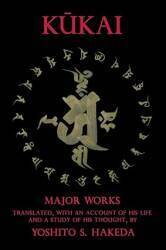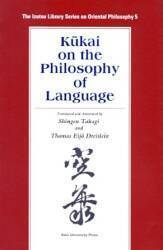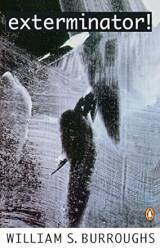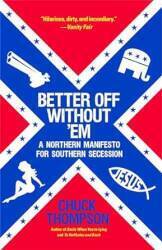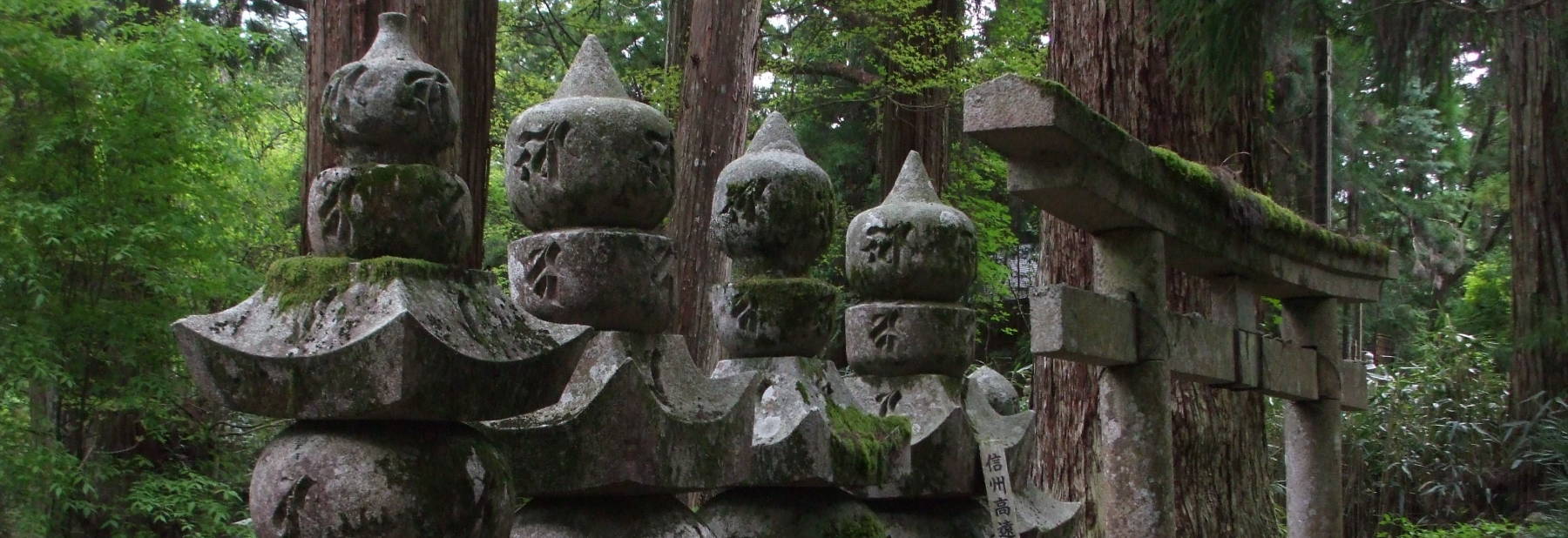
Okunoin Cemetery at Kōya-san
Okunoin Cemetery
Okunoin Cemetery is an enormous Buddhist cemetery, the largest one in Japan. This graveyard in the forest on the east side of town contains more than 200,000 stone stupas or tombs.
Below is the main entrance, at the west end of the cemetery at the edge of town. The main path through the cemetery leads for two kilometers to the Mausoleum of Kōbō-daishi, where Kūkai is entombed.
His mausoleum is at the spiritual heart of the cemetery. I have no pictures from the mausoleum area because, just as in most Buddhist temples, no photography is allowed.
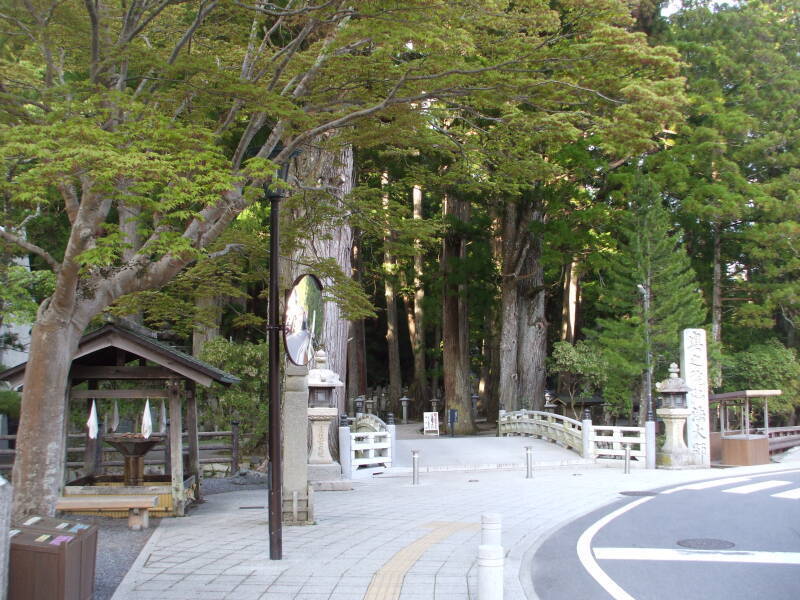
They say "There are no dead in Okunoin, but only waiting spirits."
Shintoand
Buddhism
Maitreya, the Buddha of the Future, is a figure from Buddhist eschatology. Maitreya will appear as a Bodhisattva, achieving complete enlightenment and teaching the pure dharma, the pure teachings of the Buddha, the behaviors that are in accord with cosmic law and order, the proper conduct and virtues and way of living. Dharma is known as hō in Japanese.
The Shingon sect believes that Kūkai did not die but willingly entered a state of "eternal samadhi", an indefinitely long death-like meditative state. He had long predicted the precise day of his own death, or samadhi, and sure enough, on the predicted day he died or entered samadhi. He wasn't cremated as is common in Buddhist practice, now chosen by somewhere over 99% of Japanese individuals. He was entombed instead.
According to Shingon belief, Kūkai will be the only being who can interpret the Maitreya's message. And so, the Maitreya will first appear at Okunoin, or at least come here immediately after returning. Kūkai will awaken and interpret the Maitreya's message. So, everyone wants to be there.
Okunoin cemetery is enormously popular. Members of the Shingon sect, one of the largest Buddhist sects in Japan, want to have at least a lock of their hair or a small bit of ashes entombed here. As we will see below, many corporations maintain group memorials at Okunoin where employees can get a front-row seat.

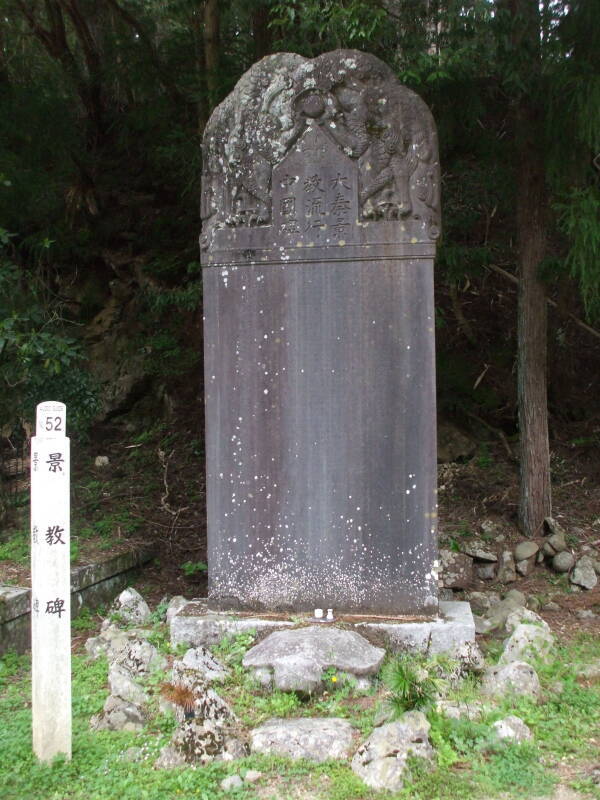
The Nestorian Stele is a Chinese monument that was erected in 781 during the Tang Dynasty in Chang'an, present-day Xi'an. That was where Kūkai studied first Sanskrit and then Shingon Buddhism in 804-806, so he probably saw the original stele. A replica is here in Okunoin.
The stele documents 150 years of early Christianity in China, after the missionary Alopen had convinced the Tang Emperor Taizong to recognize the Nestorian Christian church in 638.
Alopen was probably a Syriac-speaker from the Persian Empire or from Syria within the Byzantine Empire. The stele's text is in a mixture of Chinese and Syriac
The stele was buried in 845, during anti-Buddhist religious suppression which had expanded to include the Nestorians.
It was discovered in 1623-1625 during the late Ming Dynasty. Latin and French translations appeared in Europe within a few years. A later publication in 1667 included the original Chinese text, a Romanized version of that, and a Latin translation. The may have been the first significant Chinese text available to European readers in its original form.
The Jesuits claimed that the stele had been erected by a community of Roman Catholics, saying that Roman Catholics had originally brought Christianity to China and Nestorianism was a later heresy. Later historians found that the Nestorians were the first Christian missionaries in China.
The heading is Chinese, Memorial of the Propagation in China of the Luminous Religion from Daqin, where Daqin is the Chinese term for the Roman Empire. There is a cross at the top of the tablet. A long Chinese inscription appears below the heading.
The text refers to God, the book of Genesis from the Hebrew Bible, the Trinity, the Incarnation, the cross, and the rite of baptism. It mentions Nestorian missionaries and church supporters who had arrived in China by the year 640.
The text is mostly in Chinese, with occasional glosses in Syriac. Syriac names like Allaha, Mshiha, Satana (for God, Christ, and Satan), plus a few words of Sanskrit origin and the Persian word for "Sunday" are represented phonetically in Chinese.
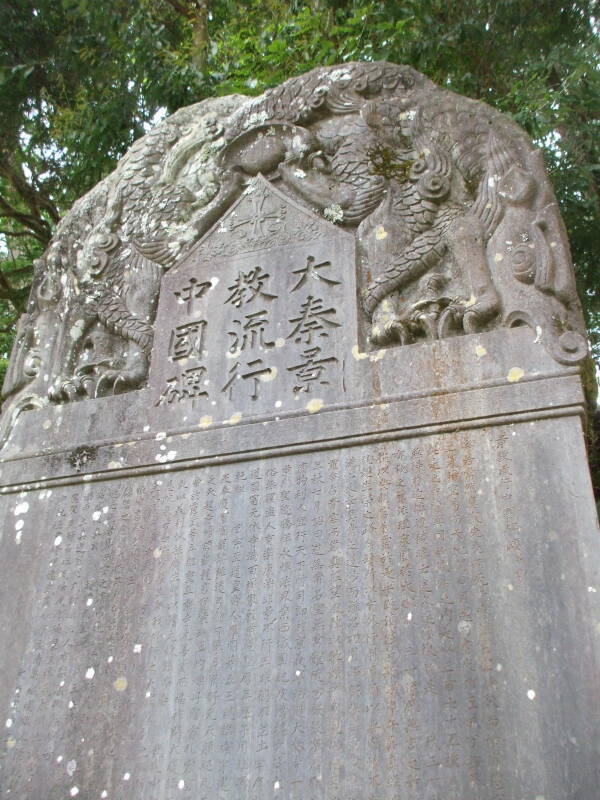
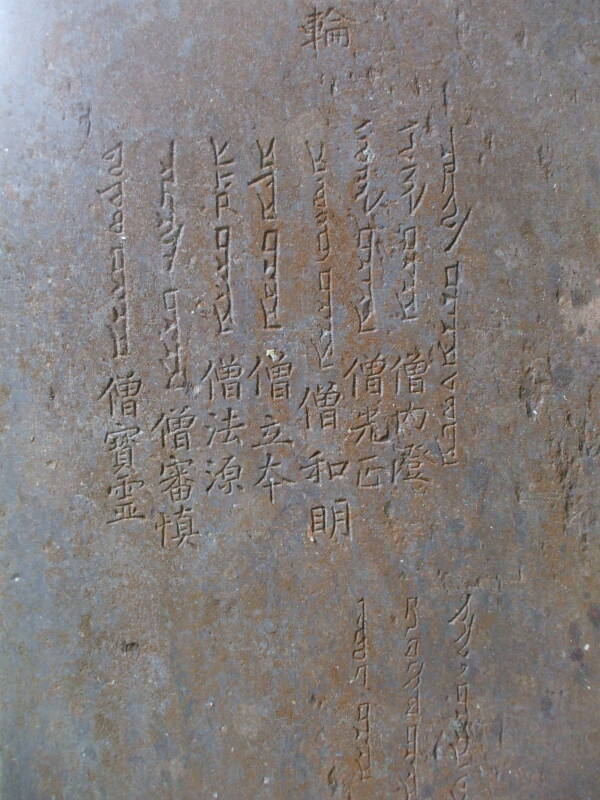
and Hiragana
The last picture above shows some of the Syriac glosses illuminating the Chinese content. This is sort of like the Japanese writing system in which a Japanese syllabary is used when needed to explain an ill-suited method for representing Japanese words in Chinese ideograms.
The original stele is now in a museum in Xi'an. In the late 1800s, many European scholars tried to get the stele taken to a "civilized" location, by which they meant western Europe — maybe Paris or Berlin, but of course London would be better.
Someone created a replica and shipped it to New York, but the Metropolitan Museum of Art wasn't interested in buying it. A wealthy New Yorker purchased that replica and shipped it to the Pope as a gift. A second-generation replica made from that replica is now at Georgetown University.
A second replica is in Xi'an, across town from the original in the museum. This one at Kōya-san is the third accurate replica.
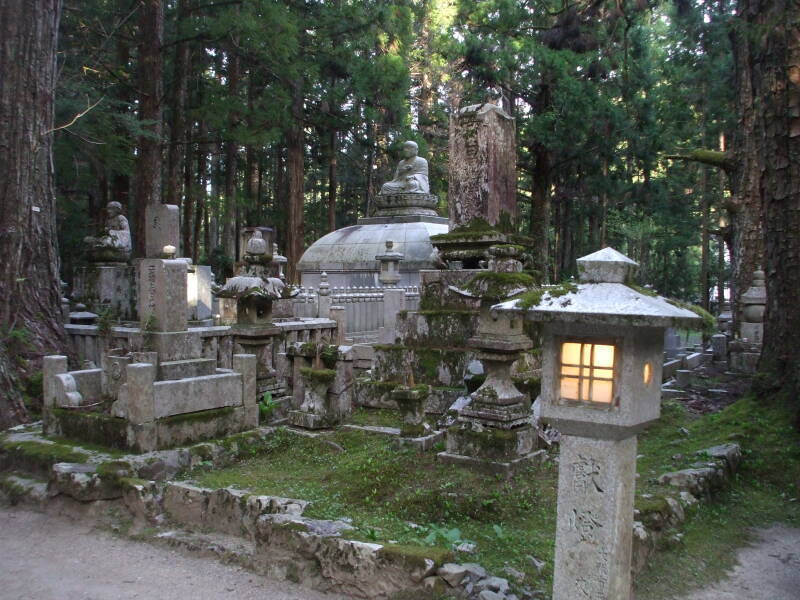
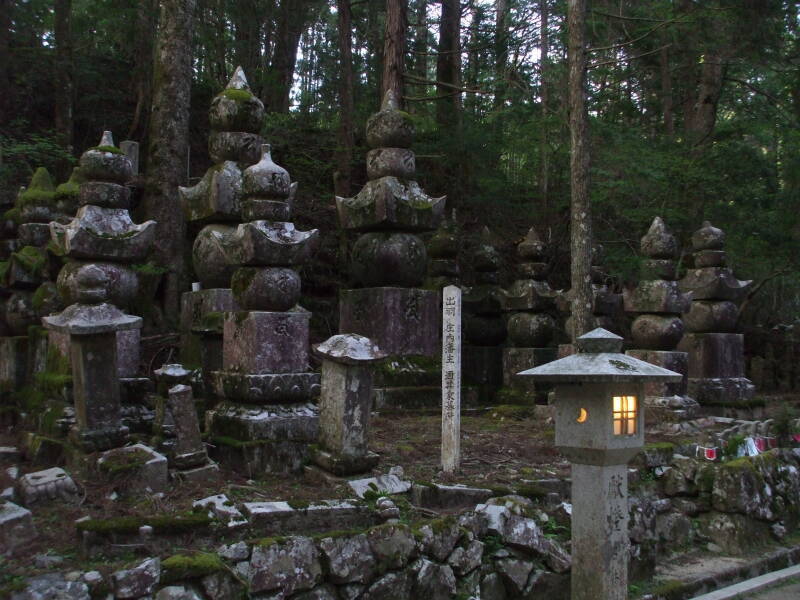
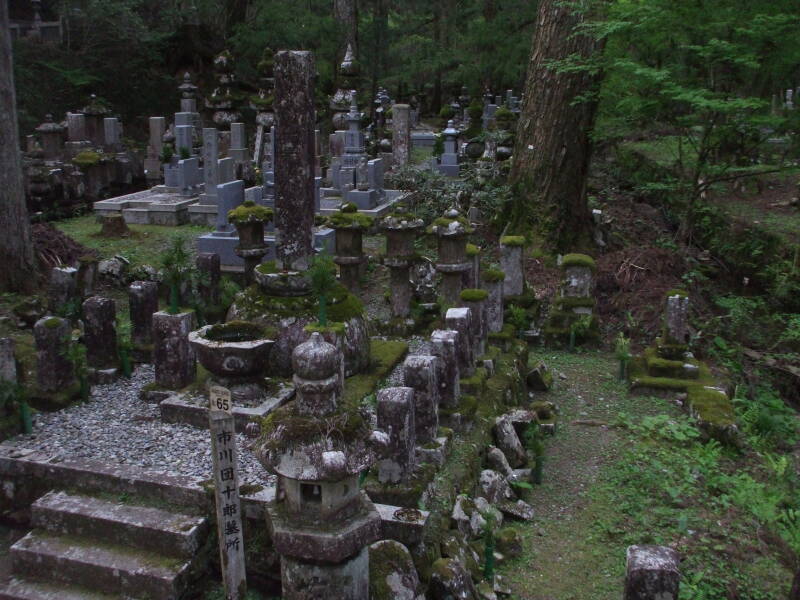
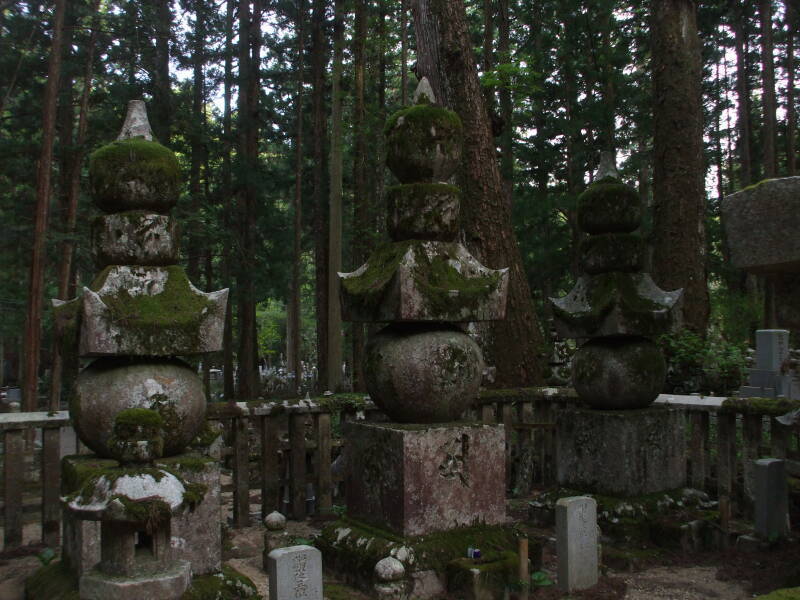
Many of the graves are marked with gorintō, a Five-Ringed Tower, a stone form of pagoda.
The five segments are labeled with Sanskrit letters in the Siddhaṃ script representing the Buddhist cosmology. These five elements form the body of the cosmic Buddha Mahāvairocana, our own bodies, and the physical world. Jewel-shape or Space at the top, cube or Earth at the bottom. The five elements plus wisdom make up the universe. The elements are not destroyed at death, and so it is possible to join with Mahāvairocana.
| Shape | Represents | Siddhaṃ | Japanese |
| Jewel-shape | Space | 𑖏 / kha | kuurin |
| Hemisphere | Air | 𑖮 / ha | fuurin |
| Pyramid | Fire | 𑖣 / fa | karin |
| Sphere | Water | 𑖪 / va | suirin |
| Cube | Earth | 𑖀 / a | chirin |
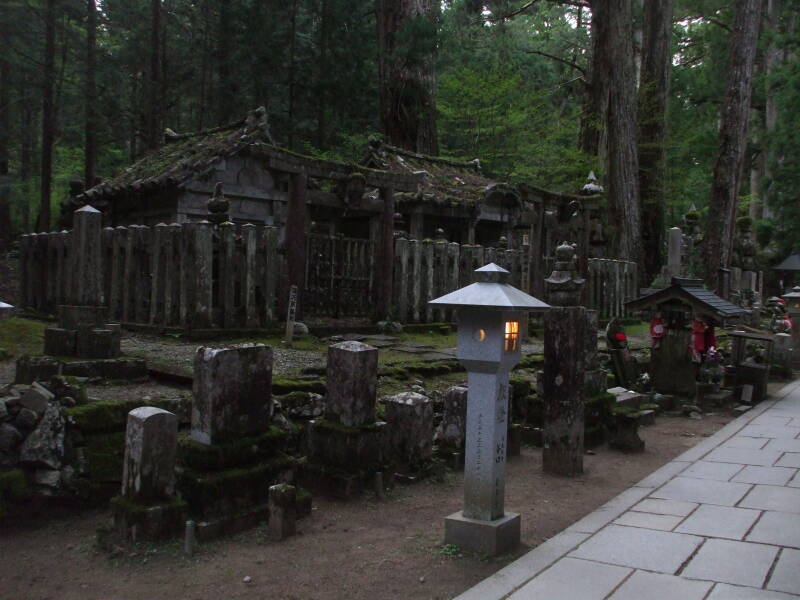
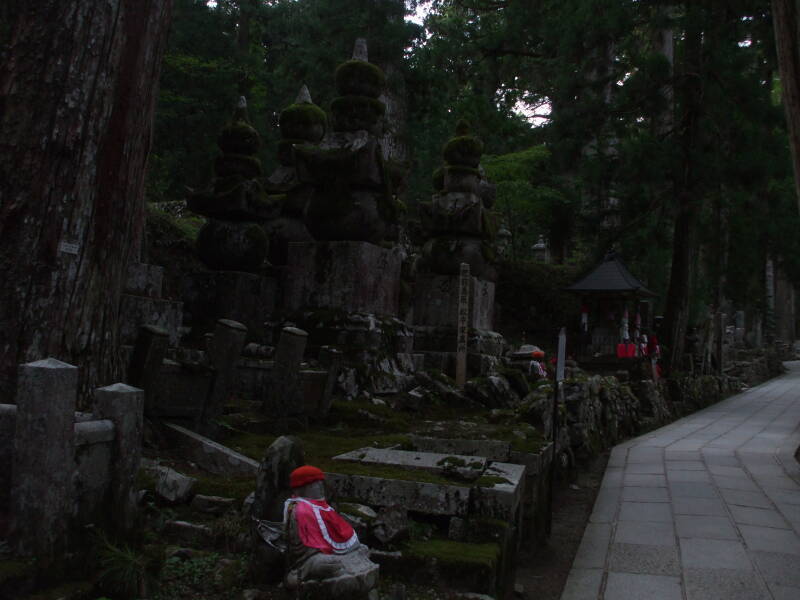
People dress many of the small figures in vermillion bibs and hats. A Jizō figure, Kṣitigarbha in Sanskrit, is a Bodhisattva who is a guardian of children and, in Japan, the patron deity of deceased children and aborted fetuses.
The cemetery is filled with enormous cedar and cryptomeria trees.
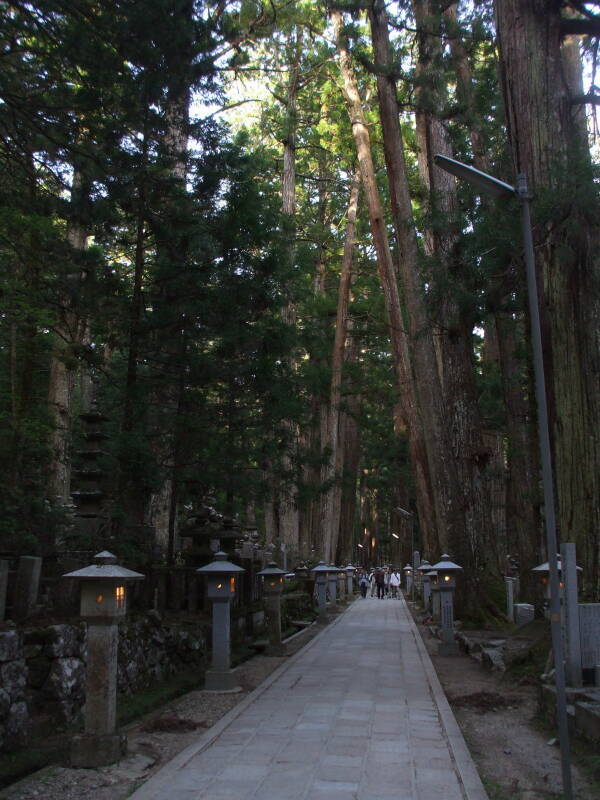
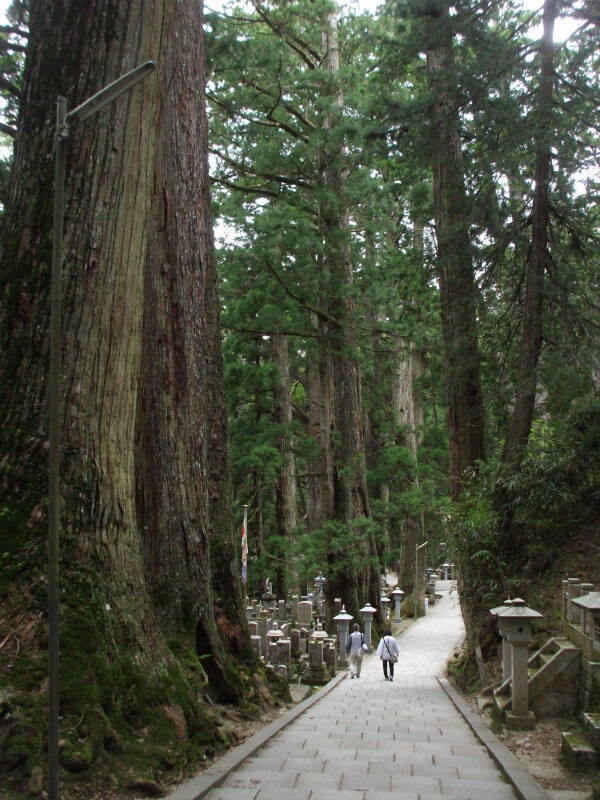
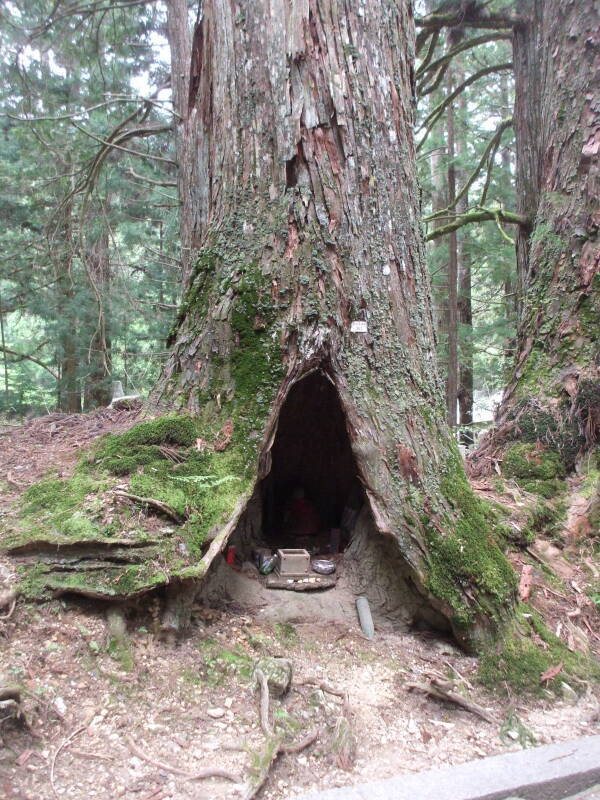
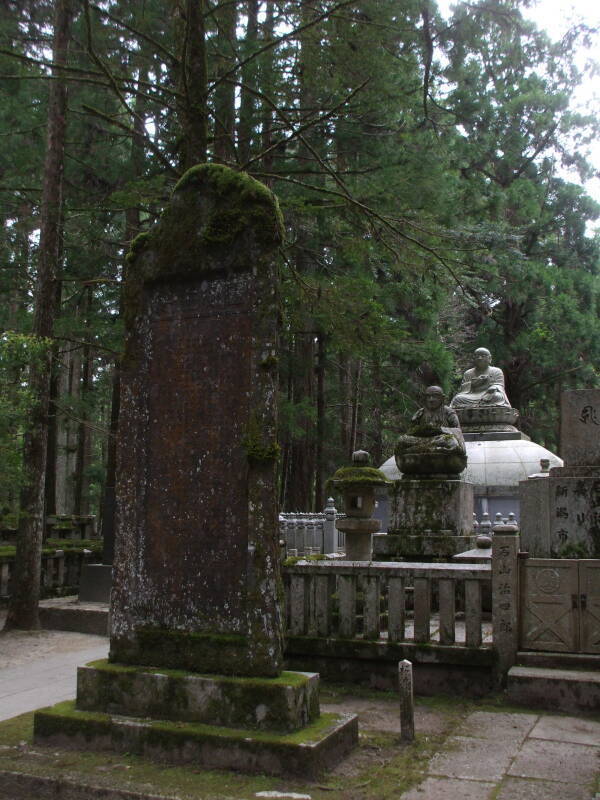
Kūkai's mausoleum is in the northern end of the cemetery. There is a daily service at 6:00 AM where sutras are chanted. It's a short walk from the Kokuu Koyasan Guest House where I stayed, maybe 15 minutes away.
There are multiple bridges over streams as you walk through the cemetery from its western end near town. You cross the Ichi Hashi-no bridge to enter the cemetery. The Naka no Hashi bridge is in the middle of the cemetery. Then the Gobyo no Hashi bridge brings you into the area immediately surrounding Kūkai's mausoleum.
The daily service is in the Tōrō-dō or the Lantern Pavilion where there are said to be ten thousand oil lanterns which are kept burning continuously. Two specific lanterns out of the ten thousand are said to have continuously burned since the eleventh century.
Beyond the Lantern Pavilion is the actual mausoleum, where the Shingon sect believes that Kūkai continues to meditate continuously for the peace of all living beings. The monks leave meals at the door to the mausoleum, and periodically change the clothes on Kūkai.
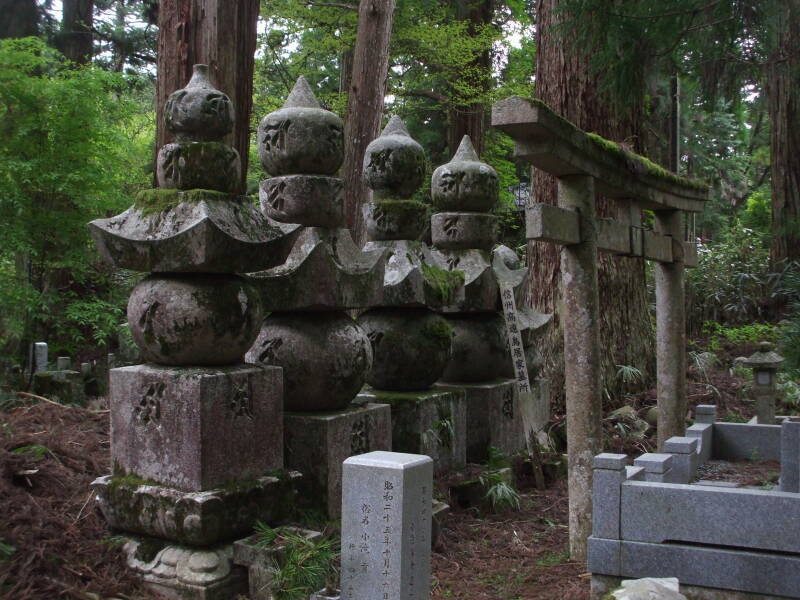
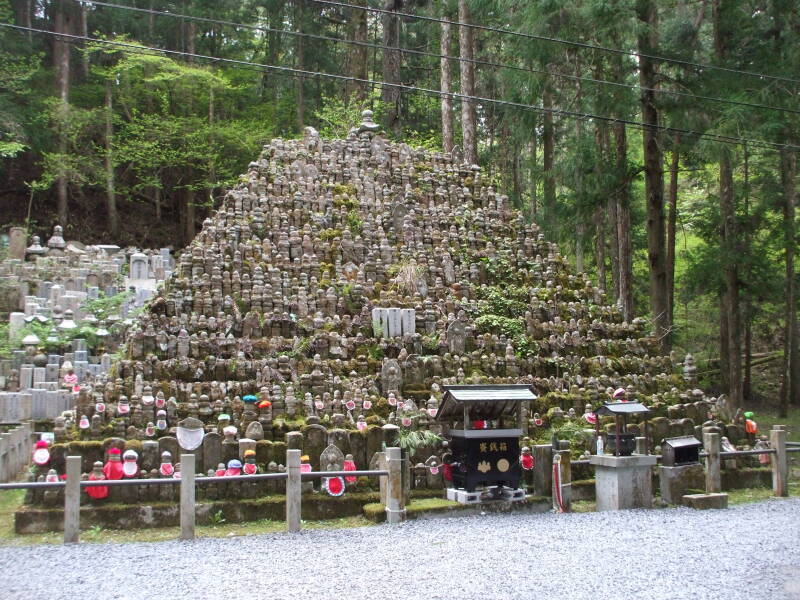
Corporate Tombs at Okunoin Cemetery
Many corporations maintain group monuments at Okunoin. One of the benefits for their employees is a place at Okunoin where the Maitreya will appear and Kūkai will interpret.
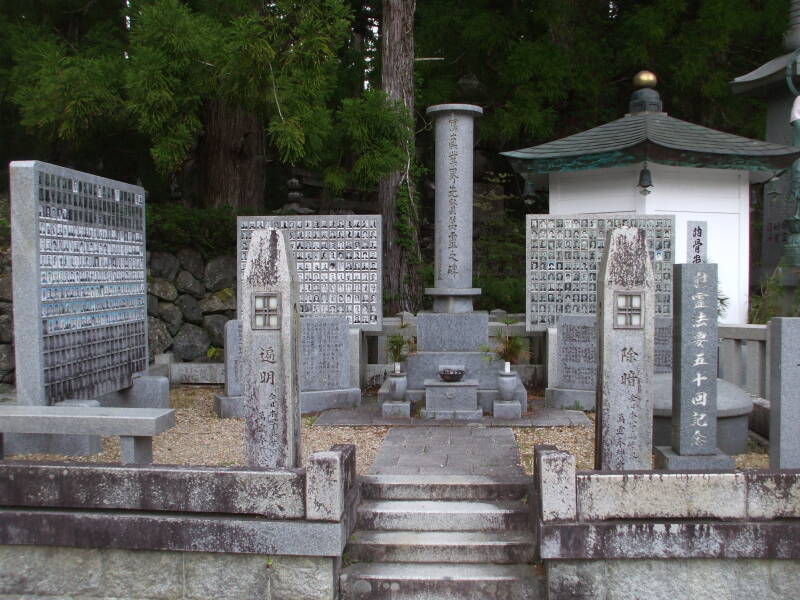
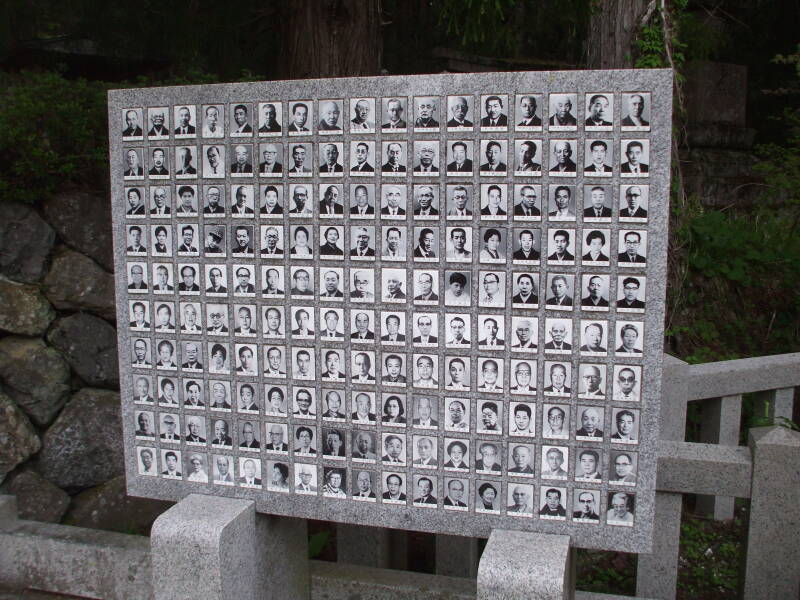
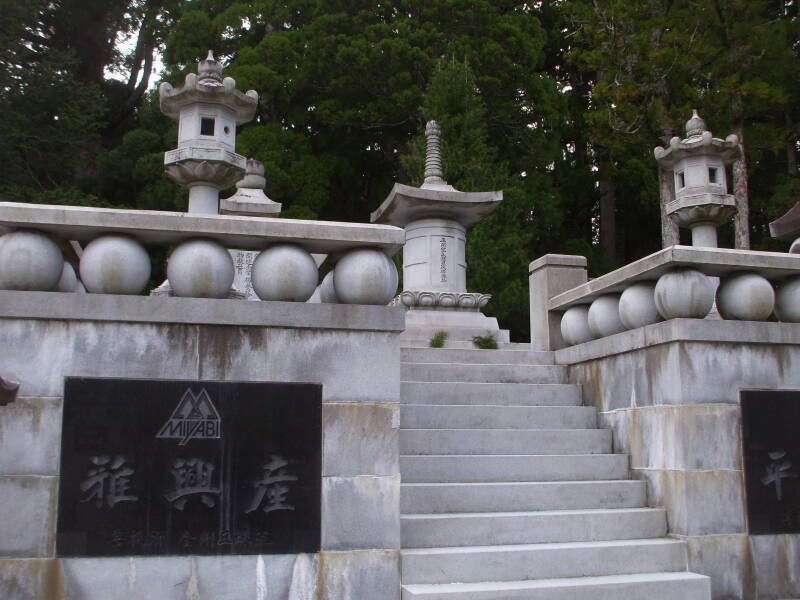
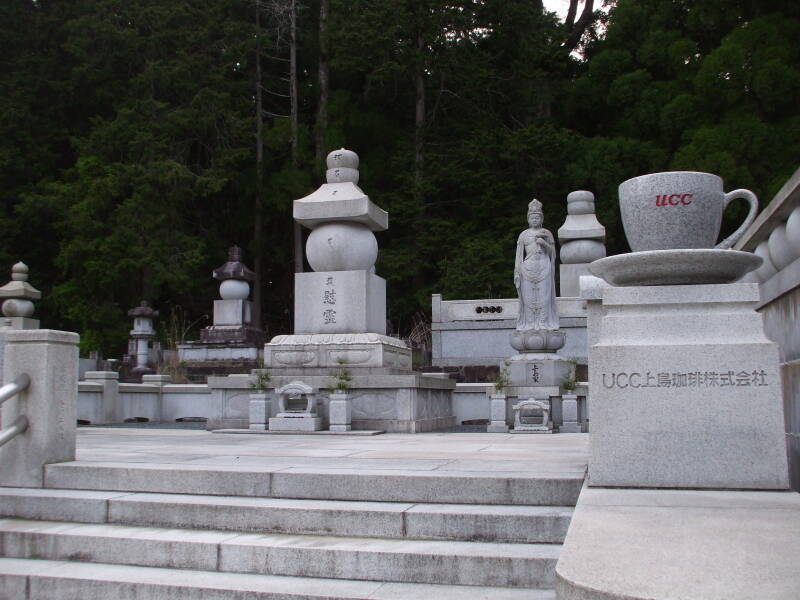
For example, UCC or the Ueshima Coffee Company. Or Komatsu, or the Sanki group.
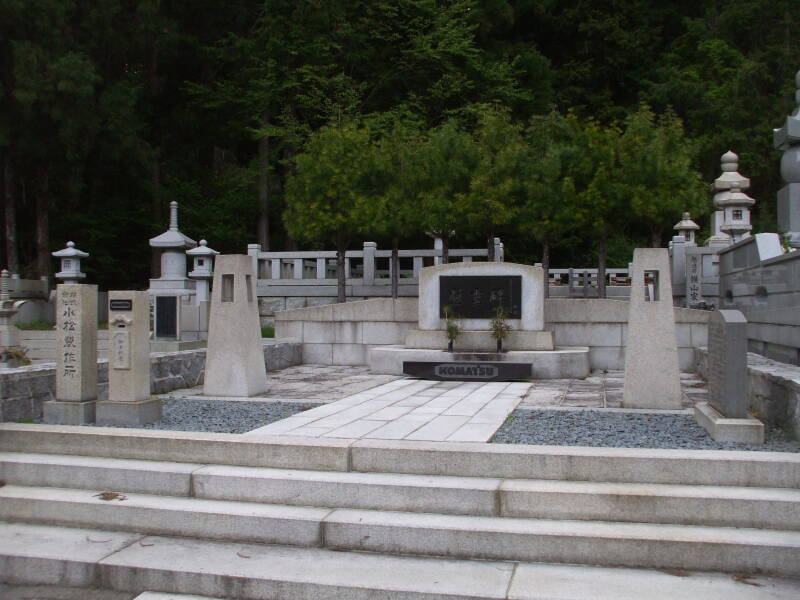
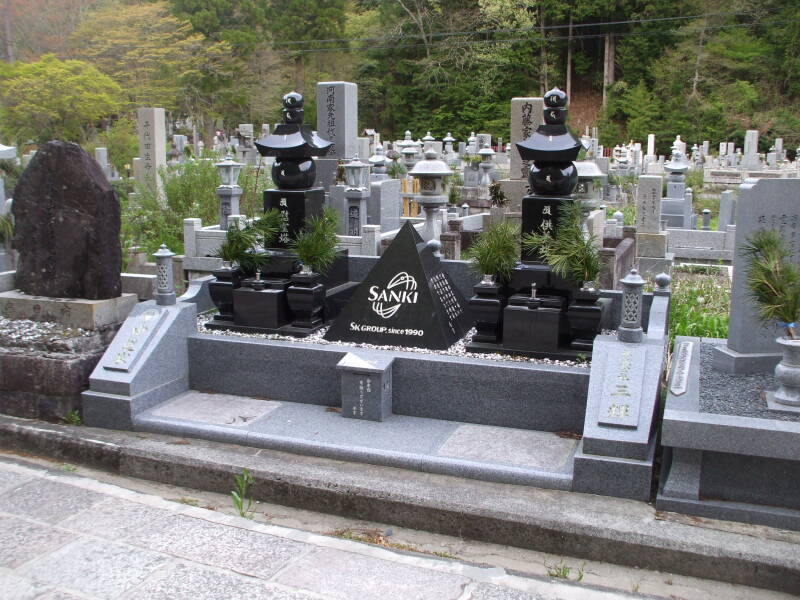
The rocket is a distinctive memorial marker!
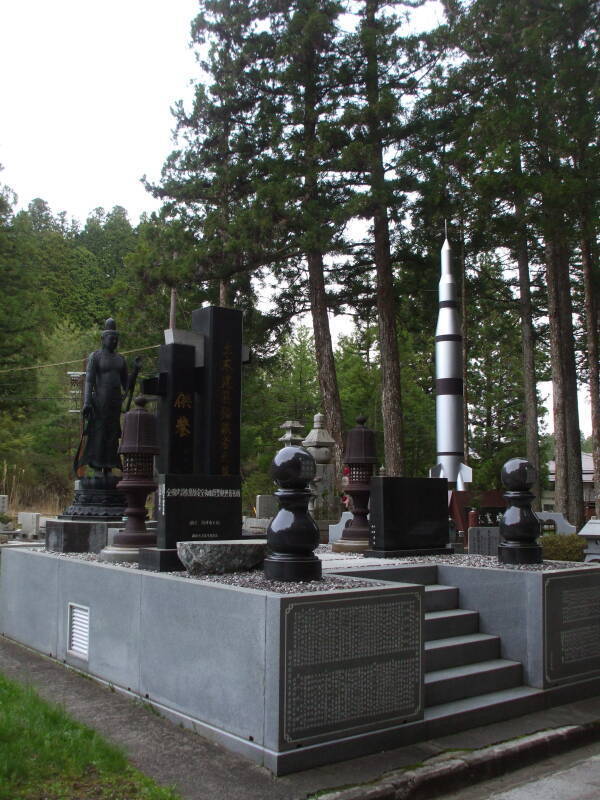

JTEKT manufactures automotive steering components. Nissan has a "heroic workers" statue.
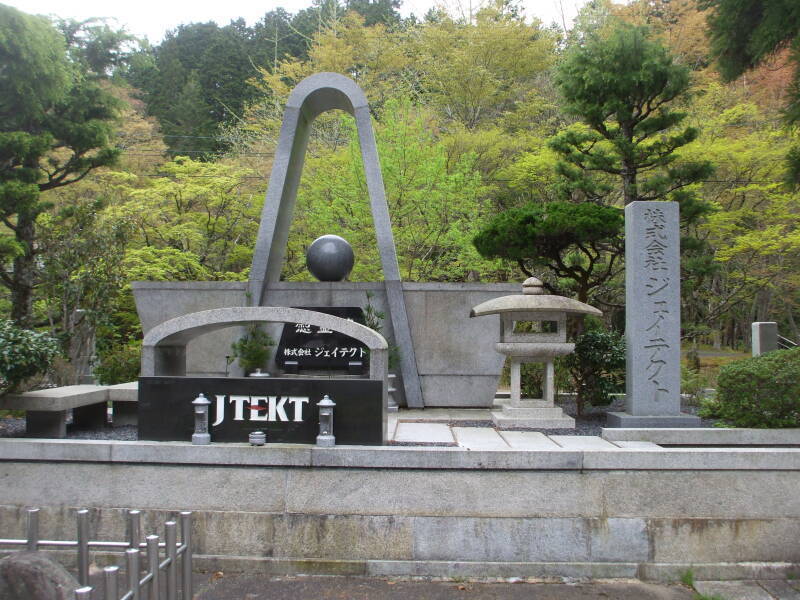
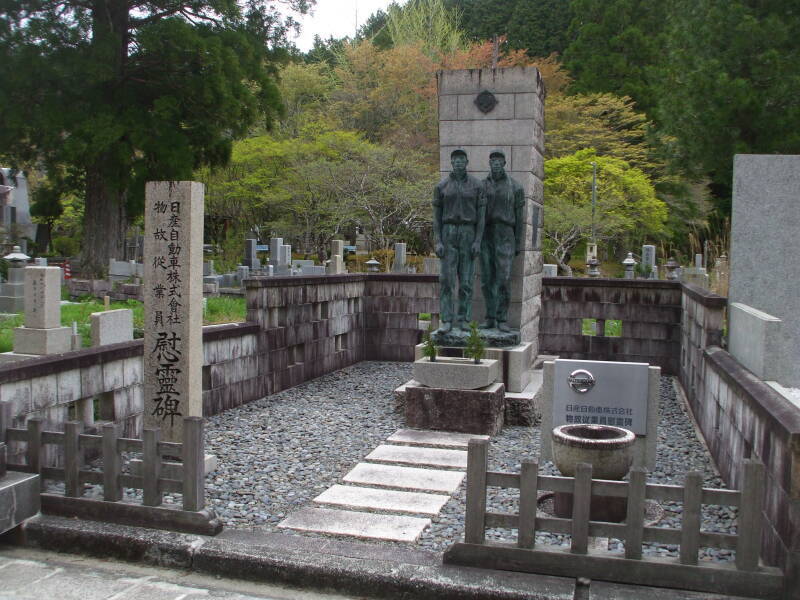
Some of the corporate memorials have a "letter box" with a slot where employees can leave their meishi or business card.
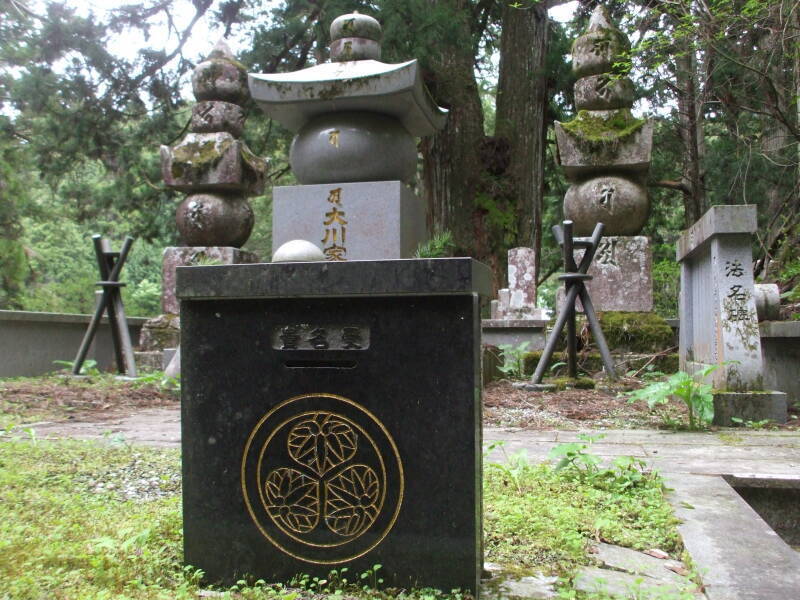
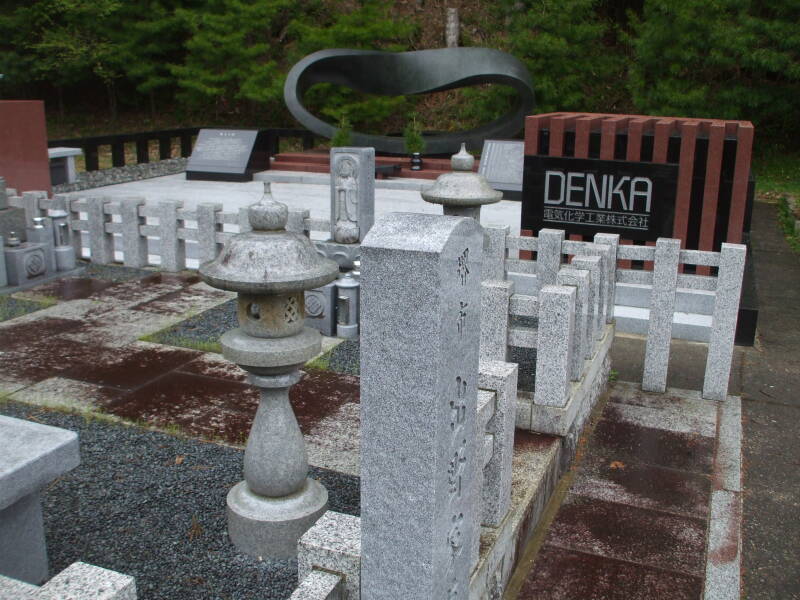
This corporate memorial has three classic style stupas based on the hemispherical tombs of India and Tibet.


The back sides have locked doors where employees' ashes or hair clippings can be added.
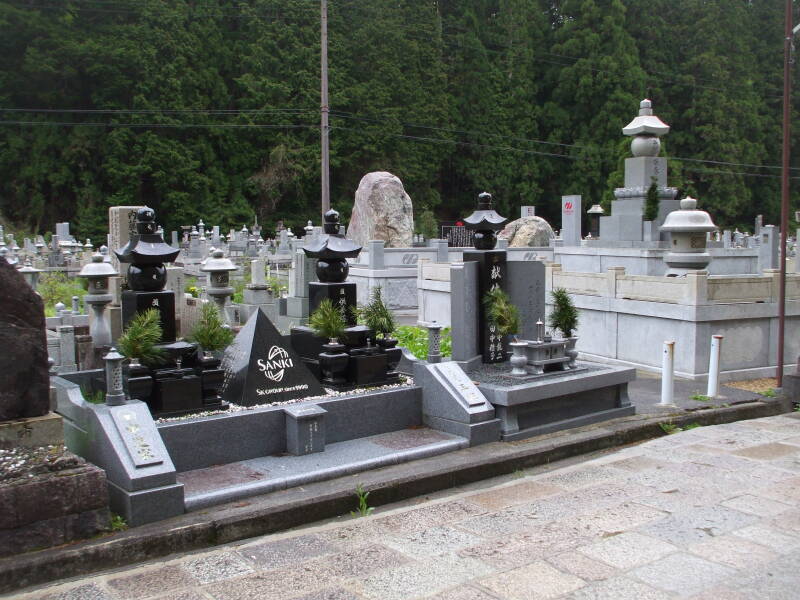
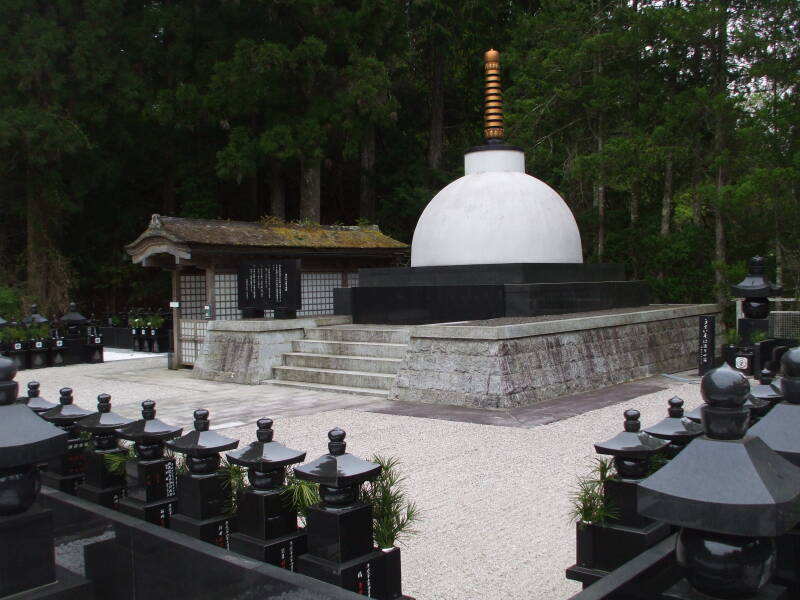
The very classic stupa above contains what is believed to be some ashes of the Buddha.
The legend of Kūkai says that he stood on the shore of China before returning home, and threw a three-pronged vajra toward Japan. A vajra is a Sanskrit word meaning "thunderbolt" and "lightning", symbolizing both irresistible force and indestructibility. In Buddhist practice it is a short club-like device.
Several years later, the Emperor of Japan had promised to support the planned monastery. Kūkai encountered a hunter with two dogs, one white and one black. The hunter and his dogs led him to Kōya-san where they found the vajra lodged in the middle of a tree.
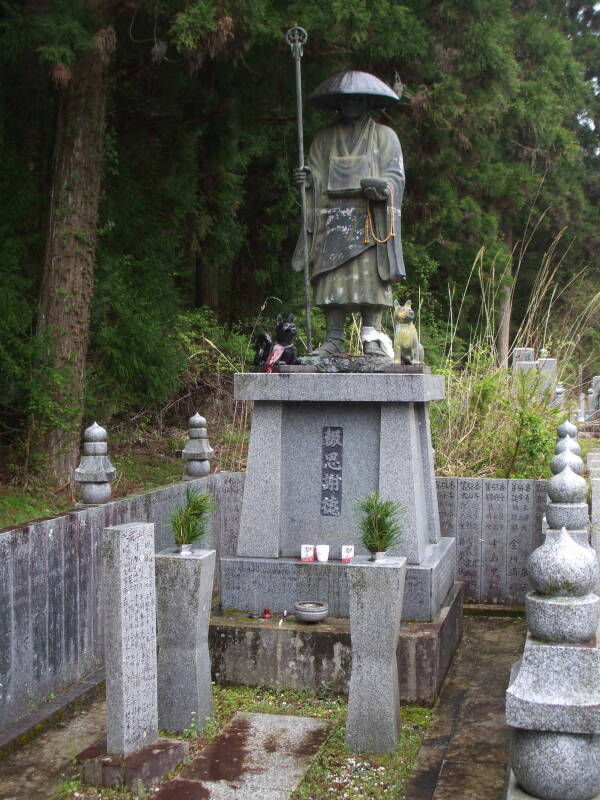
A Japanese exterminator company has a famous corporate tomb. It's difficult to reconcile the extermination business with Buddhism.
The corporate tomb functions like the others, as a place for employees when the Maitreya comes, but it also asks forgiveness for the billions of ants and termites they have killed in the course of business.
Look for the memorial reading Shiroai Yasuraka Ni Nemure or Rest in Peace. Look for the Hiragana sign しろあい やすらか に ねむれ or shi-ro-a-i ya-su-ra-ka-ni ne-mu-re near the eastern entrance.
Come through the entrance close to the information office, and the obvious rocket memorial will be on your right. This one is the first major memorial on the left.
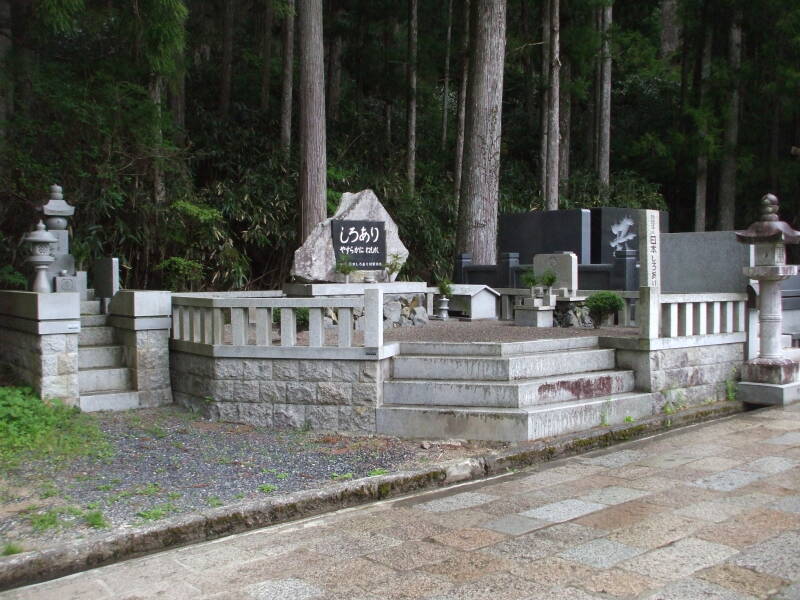
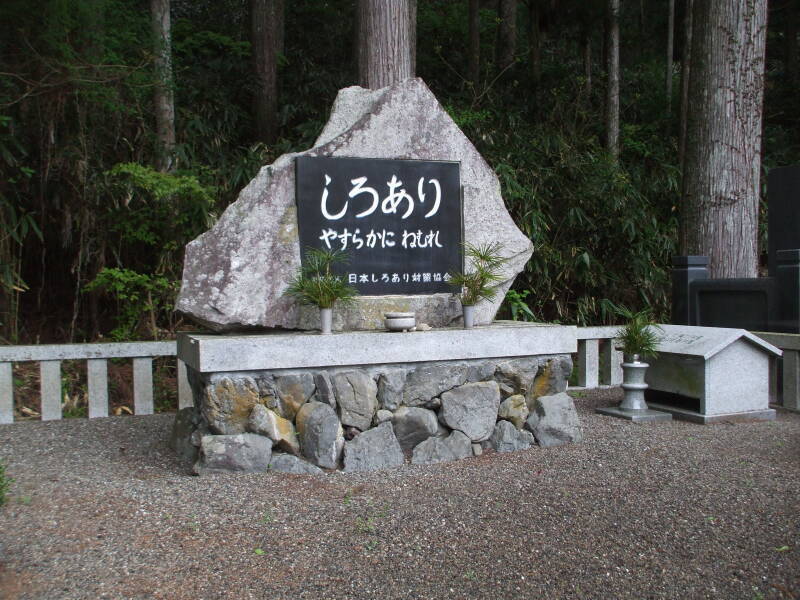
War Memorials at Okunoin Cemetery
There are war memorials within the Okunoin cemetery. The one shown here is about a Korean war, although not the war of the 1950s. The English sign reads:
Memorial for Both Friend and Foe During the
Invasion of Korea
This memorial stone was erected to pray for the
repose of all those killed on both sides during
the late sixteenth-century Japanese invasion of
Korea (1592-1598).
It was ordered by Toyotomi Hideyoshi (1537-1598),
and built by Shimazu Yoshihiro (1535-1619)
and his son Tadatsune (1576-1638) in 1599.
The memorial stands within the grave area
of the Shimazu family, the lords of Satsuma.
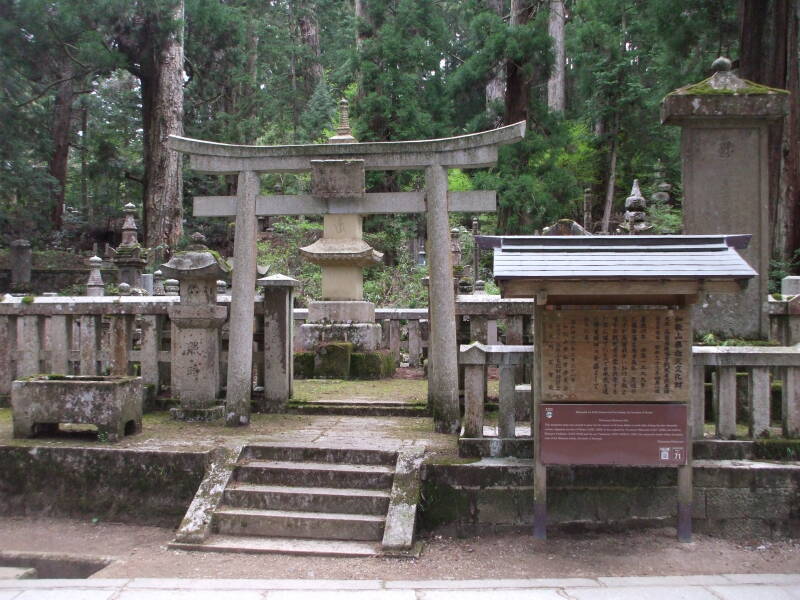
This next one has multiple national flags. The English sign reads:
This is the monument to the memory of the soldiers
of Japan and Australia, who were ordered to
North Borneo (the eastern part of Malaysia)
and died during World War II, together with
the natives who cooperated with the Japanese
army and were killed.
Please pray for their peaceful rest.
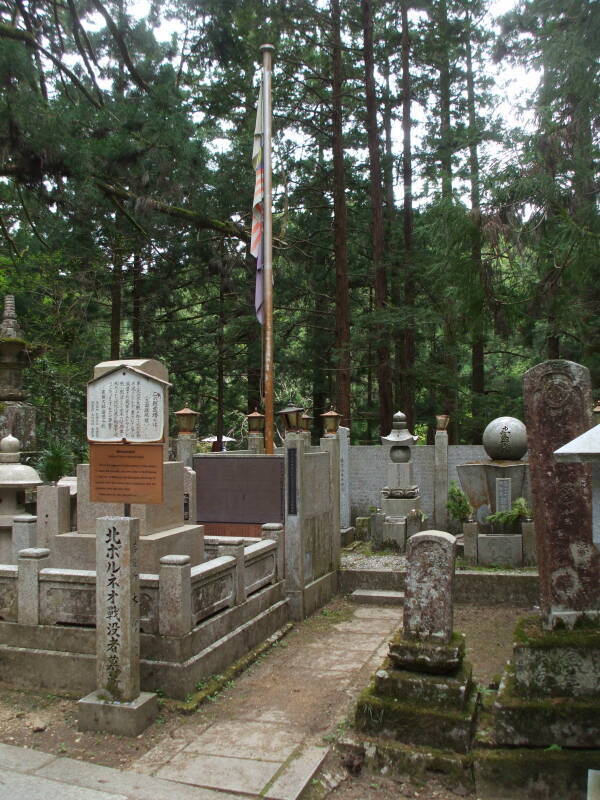
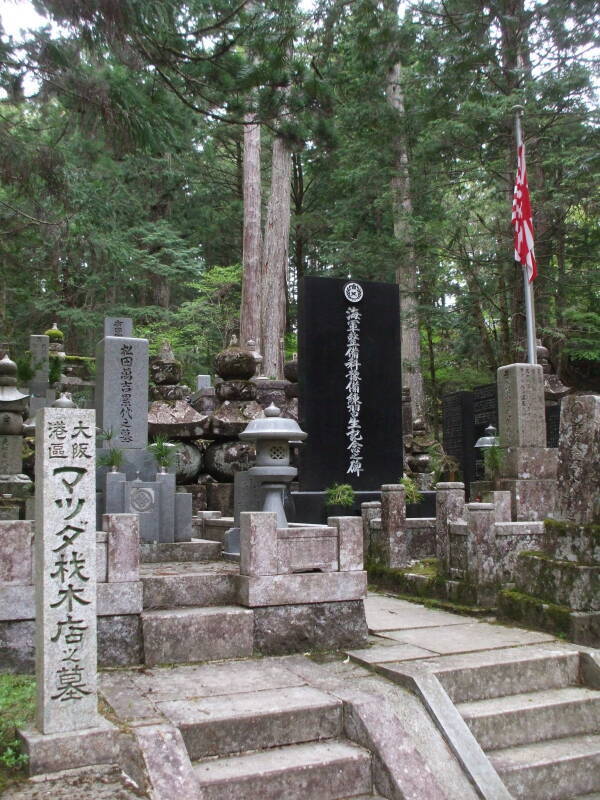
And yes, there are three memorial areas with a flag of Imperial Japan.
During a month in Japan, I saw four Imperial Japanese flags: three at Okunoin, two shown above and a small one below, plus one at Yasukuni Shrine in Tōkyō. How horrible was that for me as a visitor from America? Not very.
I was in Japan a few months after the inauguration of a U.S. President who was elected with the enthusiastic support of the Ku Klux Klan and several other White Supremicist and neo-Nazi groups.
In the neo-Confederate swamp of Indiana, where I live, in any typical day you see more than four examples of the Confederate Flag, the symbol of treason, racism, and failure.
The small town in Indiana where I grew up is now the home of two neo-Nazi organizations openly operating on a national scale.
Three months after I returned from this trip, a large Virginia rally by white supremacist, neo-Confederate, and neo-Nazi organizations turned violent. They killed one woman and injured 19 other people, five of them critically. After three days of criticism and pressure from political figures and the public, the U.S. President finally issued a grudging criticism of the K.K.K., neo-Nazis, and other white supremacists. Then, the following day, he went back to his original statement that the neo-Nazis and the Klan weren't entirely to blame and that their membership included "some very fine people".
Meanwhile, in America
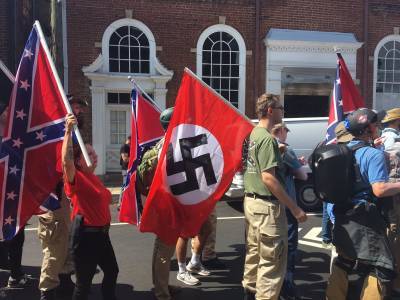
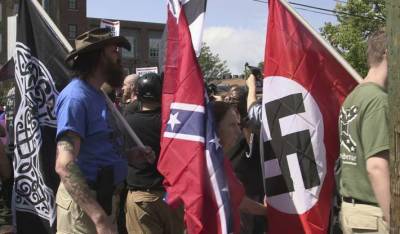
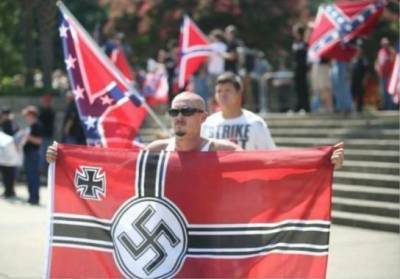

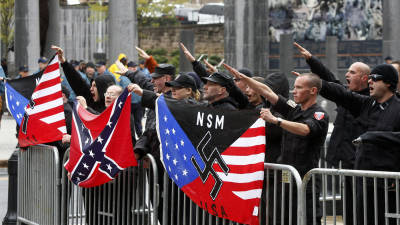
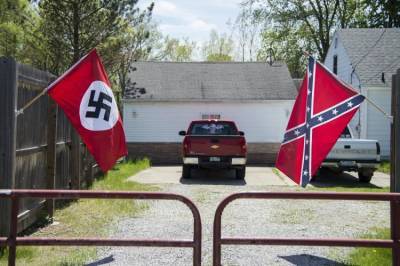
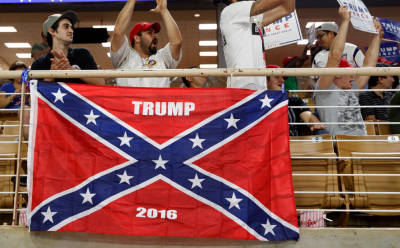
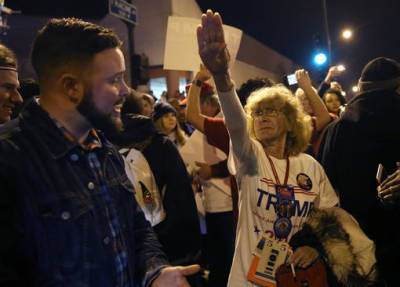
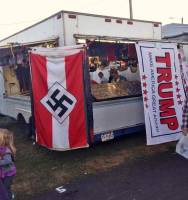


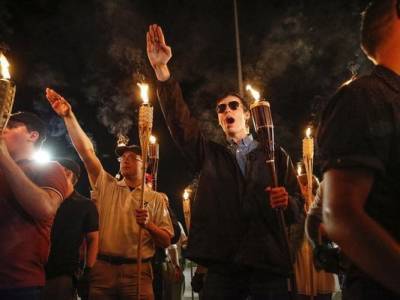
Enough of that, now back to Japan
Yes, Japan has some "history" textbooks that deny what really happened during World War II and the years leading up to it. They're very much like the "history" textbooks used in several states in the U.S. to teach children that the American Civil War had nothing to do with slavery or racism, and that rather than treason by the south the war was caused by some supposed aggression by the north. (see The Atlantic, The Washington Post, and NPR about Virginia school textbooks, and The Washington Post, The New York Times, and the Houston Chronicle about Texas school textbooks, both of those among many others)
So, are there delusional people with offensive beliefs in Japan? Yes, a few, but they're not nearly as common or as dangerous as in the U.S.
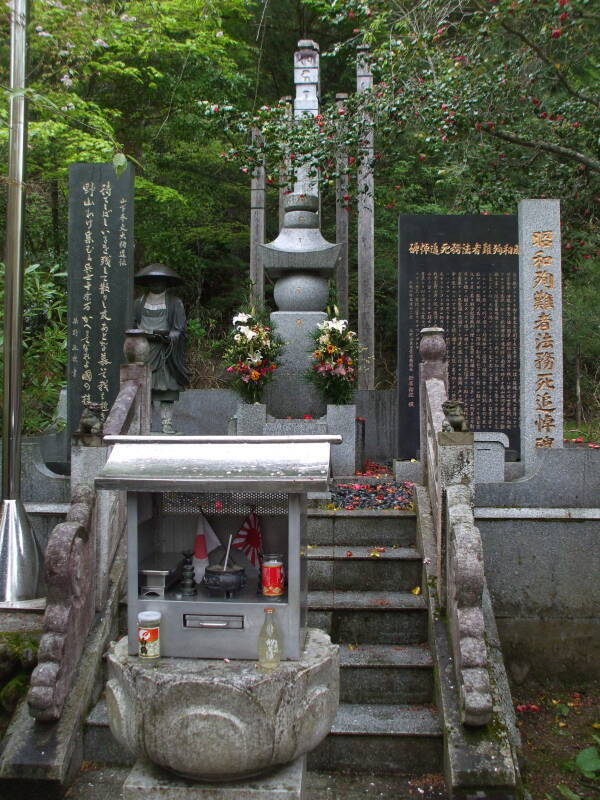
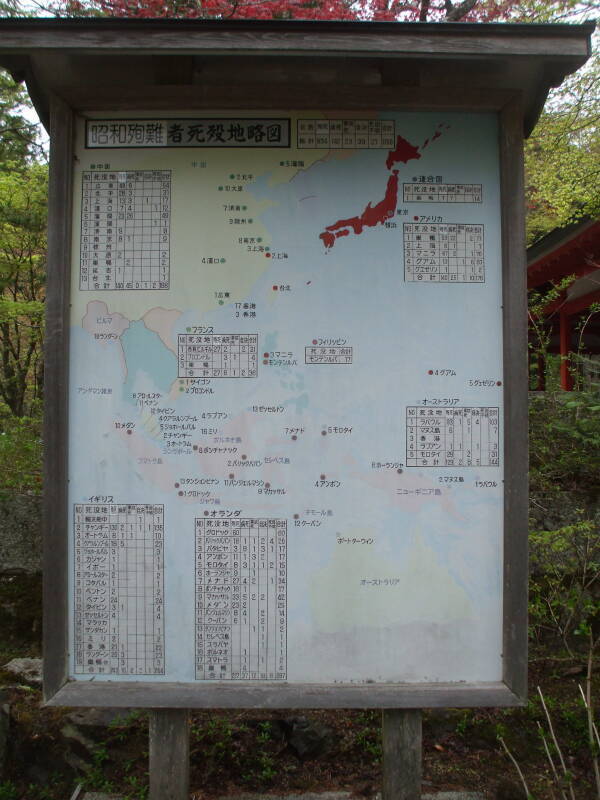
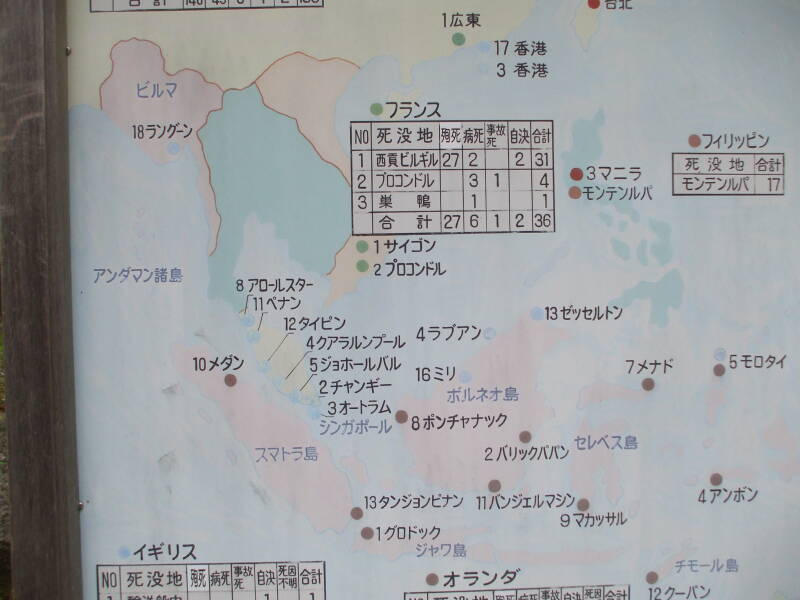
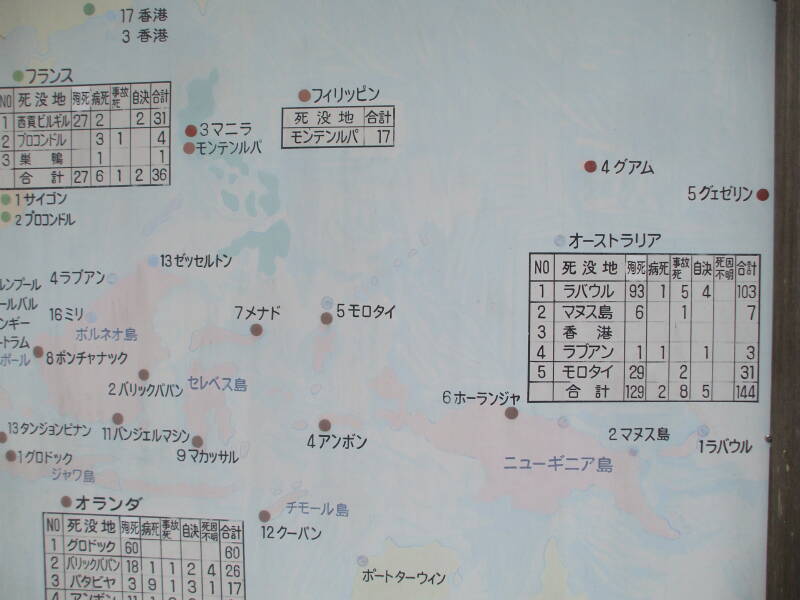


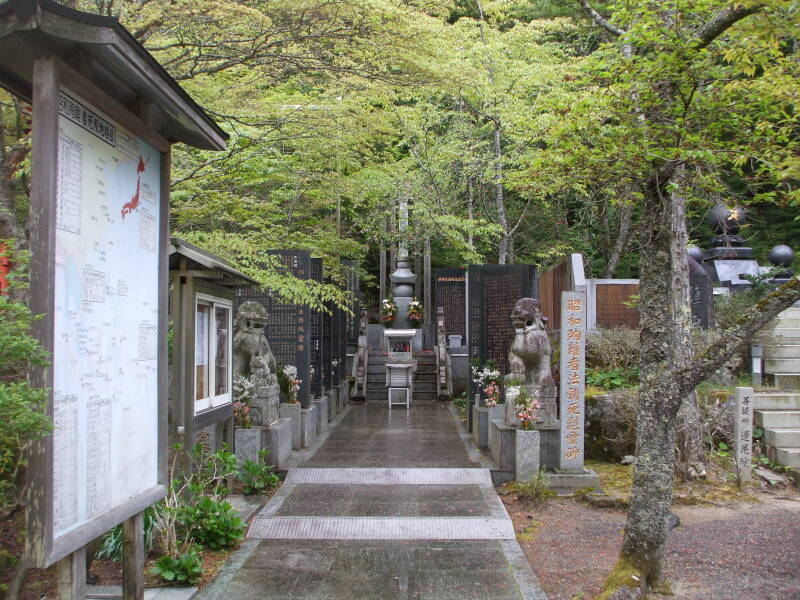
Other topics in Japan:
